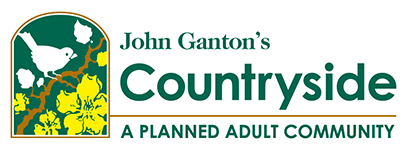Physical activity is crucial to safeguarding your health and ensuring your longevity. Not only can it keep your body in optimal condition, but it can also boost your mental state, ensure your continued independence and improve overall quality of life.
Of course, you can’t be expected to run a marathon like you might have once done, but there are plenty of ways to stay active and keep fit no matter what age you might be.
Want help staying as you age? We have you covered.
Senior Fitness Guidelines
As a general rule, you’ll want to get at least 2 to 3 hours of moderate aerobic activity every week. Focus on low-impact activities, like biking, swimming or brisk walking, and try to vary exercises day to day. You’ll also want to include some muscle-strengthening activities as well. Avoid standard weight-lifting machines and tools, and use resistance bands and light hand weights instead.
When possible, take your activities outdoors. Sun exposure provides important vitamin D, which can both improve your health and your mood. Be sure to get plenty of water before, during and after your workouts, too. This is vital to staving off injuries and adverse reactions.
The Best Exercises for Aging Adults
Swimming is just about the best exercise you can do – no matter what your age. It offers a low-impact, all-over workout that increases your circulation, strengthens your muscles and ups your heart rate all at the same time. Because it’s done in water, it also minimizes the stress on your bones and joints – something very important to aging adults, especially those with osteoporosis, arthritis or injury.
Yoga and pilates are also top-notch options for seniors. Both low-impact exercises, pilates and yoga help strengthen and stretch your muscles as well as improve your balance, stability and even mobility. If you’re new to either, start with a beginner’s program, or look into senior-only classes to ensure the poses and speed is up your alley.
Brisk walking is a great exercise for aging adults as well. For one, it can be done anywhere, anytime. You don’t need fancy equipment or an expensive gym membership; all you need are a good pair of sneakers and the great outdoors. Walking is also great for exercising with friends or loved ones, and it gives you an opportunity to get some sun – a vital part of staying healthy as a senior. Just make sure to put on some sunscreen before heading out.
As for strength training, invest in some resistance bands to improve your muscle tone. Affordable and easy to use, they’re great for training virtually any muscle on the body – and you can use them anywhere. They’re super portable, and they’re easy to use in your room, on your back porch or even on the couch.
Finally, cycling is a great workout if you can get access to a bicycle. Not only does it give you a great aerobic workout, but it also strengthens your leg muscles, helps with balance and improves your posture. If you don’t have sidewalks or trails near you, you may want to consider a stationary bike – or a gym that has one.
Exercises to Avoid
While staying active is hugely important as an aging adult, it’s important to note that your body isn’t the same as it was in your younger years. You may not be able to do the same activities, at the same speed or for the same long durations as you once did – and that’s OK. Getting a great workout and staying healthy is still very much within reach. Just know your limitations, and plan your workouts around those.
Activities you might want to avoid as you get older
- Running – Running is one of the most common exercises out there. You don’t need equipment, it offers a full-body workout and it improves circulation throughout. But, it’s also a very high-impact exercise, putting the force of three to four times your body weight on your feet every time you land. That can be dangerous as your bones start to weaken and get frail – and it could result in serious injury.
- Certain weight lifting exercises – Some weight lifting is OK – particularly if it’s done using lightweight hand weights or kettle bells. But chest presses, deadlifts and leg presses? Those are downright dangerous for seniors. They can tighten already contracted muscles, hurt your spine or compromise your skeletal system. If you’re interested in lifting weights, make sure to talk to a certified personal trainer first to make sure you’re doing the right exercises – in the right way.
- Crunches – The time to build up washboard abs is gone. Sit-ups and crunches can lead to curvature of the spine – or it could even fracture your spine irreparably. As you age, you want to minimize the bending of your back, and crunches do just the opposite. If you’re looking to work on your core muscles, try leg lifts or planks. These are easy on your spine and require no heavy lifting.
- Stair climbers – Whether you’re on a stair climbing or simply going up a flight of stairs, you’re increasing your chance of a fall. As you get older, you lose muscle mass and your balance starts to waver – both of these changes can make stairs a dangerous hurdle for your body. In fact, more than half of all senior falls occur on stairs, not to mention about 20,000 deaths per year. Take the elevator or a brisk walk instead.
Here at Ganton’s, we make your physical fitness and well-being a priority. With a full array of activities, facilities and medical staff at your disposal, staying in shape and healthy is easy here on our campus. Stop by today and see for yourself.
For information about Countryside, call Margaret Nagel at (517) 206-5000 or download our brochure to learn about our care levels, cost, and amenities.


